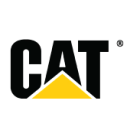In a flurry of blood-orange wings, millions of monarch butterflies make their pilgrimage from the northernmost regions of the United States and Canada to the balmy mountains of central Mexico.
When the nights grow longer and fall leaves begin to turn, the delicate insects flee the cool climes in favor of their temperate overwintering grounds. There, the monarchs gather by the millions — adorning the local oyamel fir trees with a quivering tangerine cloak and starting anew with their next generation.
Spanning 3,000 miles and several weeks, the monarch butterfly’s North American crusade is not unlike the great tech migrations: both are labors of love that call for immense strategy and patience.
Just ask Caterpillar Digital Architect Pranita Usgaonker, who contributed to the company’s recent telematics-device gateway migration, a massive undertaking in its own right.
“Our challenge was to migrate all of our 1.2 million telematics devices to the new gateway — each customer device had to be repointed to the new platform without losing connectivity,” she told Built In Chicago.
Whether on wingtip or via robust gateway infrastructure, the art of migration is never easy. “This one has taken three years,” Usgaonker said. “It's OK to start small, keep achieving incremental milestones and celebrate small successes on the way.”
Built In Chicago sat down with Usgaonker to find out more about the nuanced strategy, intensive feedback and employee willpower that powered Caterpillar’s great telematic-device gateway migration.
As a part of Caterpillar, Cat Digital uses digital technologies in its mission to help customers build a better, more sustainable world. As the “digital and technology arm of Caterpillar Inc.,” Cat Digital strives to bring digital capabilities to its “world-famous yellow iron.” On the topic of migration, Digital Architect Pranita Usgaonker is an advocate for teamwork. “Extensive testing, including user acceptance testing and hardware-in-loop were a critical part of mitigating issues,” Usgaonker told Built In Chicago. “We also worked with teams in the field to validate functionality and device connectivity with real machines.”
Describe a migration Cat Digital recently orchestrated.
We recently migrated our legacy telematics device gateway to a Caterpillar-owned, AWS-hosted gateway — which we refer to as our Caterpillar Digital Telematics Gateway. Our old gateway lacked the scalability required to support our ever-increasing population of connected machines and engines, limited our ability to keep devices up to date with new firmware and was quite costly. In addition, the old gateway relied on scheduled deployment windows.
Our new telematics gateway has been designed and implemented to provide necessary scalability using AWS’s more modern, cloud-based infrastructure — which supports our current needs and future growth plans. It supports more than 15 telematics device categories. Every day, the platform receives messages and queues commands from our connected assets, handling tens of millions messages per day. The new gateway also supports different communications protocols.
How did your team prepare for the migration and mitigate potential issues?
Our biggest challenge during this migration was to ensure our dealers and customers had uninterrupted access to our applications.
We had to meet aggressive timelines while maintaining backward compatibility with existing applications that consume machine data and with machines using the gateway to configure themselves remotely. In addition, we had to make sure the new gateway supported the same message protocols and formats as the previous gateway — as well as some new ones.
Many teams collaborated to develop and test all aspects of the end-to-end systems and resolve any device software or connectivity issues. We took steps to ensure that our apps received 100 percent of their data, regardless of which gateway the device was talking to.
We had a robust monitoring and logging setup to quickly detect and isolate problems for resolution. Automated device migration scripts enabled large volumes of devices to be migrated and rolled back by a particular device type.
Everything starts with good planning, a good migration strategy and clear milestones to support a big goal.”
What advice would you offer a software engineering team leader who has been tasked with orchestrating their first migration?
Ultimately, having a clear device migration strategy was a major contributor to our success. We organized devices by their complexity to achieve cumulative device functionality so we could migrate devices incrementally from simplest to most complex. We worked methodically, building the core functionality and base gateway, releasing it to production, migrating devices and then getting feedback from stakeholders before building more functionalities.
Everything starts with good planning, a good migration strategy and clear milestones to support a big goal. Getting frequent feedback from applications and data consumers is also key, as is strong collaboration and effective communication with different teams.







